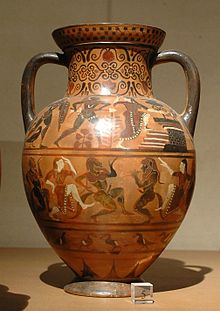Green body
Appearance

A green body is an object whose main constituent is weakly bound ceramic material, usually in the form of bonded powder or plates before it has been sintered or fired.
In ceramic engineering, the most common method for producing ceramic components is to form a green body comprising a powder of the desired composition of ceramic and binder, and then to sinter it in a furnace to produce a strong, dense object.
This method is used because of difficulties with the casting of ceramics — due to their extremely high melting temperature and viscosity (relative to other materials such as metals and polymers).
See also

